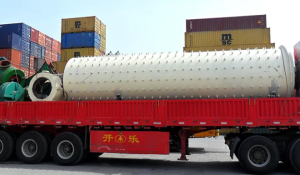In the intricate world of material grinding and processing, two commonly encountered machines are the ball mill and the roller mill. While both serve to reduce the size of raw materials, their mechanisms and applications differ significantly. This article dissects the core differences between these two milling giants.
Understanding the Ball Mill
A ball mill is a cylindrical apparatus that utilizes a tumbling process to grind materials. Inside the rotating drum, you'll find grinding media, usually steel or ceramic balls. As the drum rotates, the balls cascade and tumble, colliding with the material inside. This repeated impact and attrition break down the material into finer particles.
Diving into the Roller Mill
Distinct from the ball mill, a roller mill uses a set of rotating rollers to grind materials. The raw material is fed between these rollers, which apply pressure and shear forces, breaking the material down. The space between the rollers, known as the nip, can be adjusted to determine the final size of the ground product.

Comparing the Two: Ball Mill vs. Roller Mill
- Mechanism of Action: As discussed, ball mills rely on impact and attrition from the tumbling action of the grinding media, while roller mills use compression and shearing forces between rollers.
- Efficiency: Roller mills generally offer better energy efficiency than ball mills due to the more focused grinding action. The material spends less time in a roller mill than in a ball mill, resulting in less energy waste.
- Flexibility in Output Size: Roller mills often provide more control over the final product's size, given the adjustable gap between the rollers. Conversely, the fineness from a ball mill depends on factors like the size of the grinding media, rotation speed, and duration of milling.
- Applications: Ball mills are predominantly used in industries like mining, ceramics, and paint, where the material's uniformity and fineness are critical. Roller mills find broader applications, from agriculture (for grinding grains) to cement production.
- Wear and Tear: The nature of the grinding medium in ball mills means that there is potential for more wear and tear on the drum's lining. Roller mills, while not immune to wear, tend to have longer intervals between maintenance due to the absence of grinding media.
- Material Handled: While both mills can handle a variety of materials, roller mills are often preferred for softer materials or those prone to heat generation. The focused grinding action in roller mills reduces the potential for material overheating.
Both ball mills and roller mills have carved their niche in various industries, serving specific needs and applications. While they both aim to reduce material size, understanding their unique features and capabilities can guide industry professionals in making an informed choice tailored to their specific requirements.
